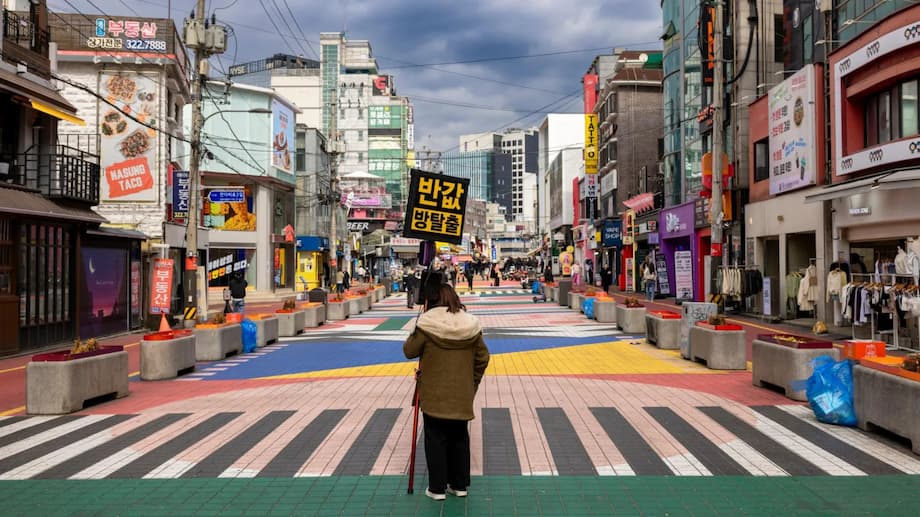Seoul’s Loneliness Crisis: Why the City Is Taking Action
In the heart of South Korea’s bustling capital, a quiet revolution is underway. Seoul, a city of nearly 10 million people, is confronting a growing epidemic that has crept into its high-rise apartments and narrow alleyways: loneliness. With single-person households now making up nearly 40% of all homes in the city, and studies estimating that over 130,000 young people are living in near-total social withdrawal, the Seoul Metropolitan Government has launched a sweeping initiative to address the crisis head-on. At the center of this effort are the city’s new ‘warm-hearted convenience stores’—welcoming spaces designed to offer comfort, connection, and a sense of belonging to those who feel isolated in the urban sprawl.
- Seoul’s Loneliness Crisis: Why the City Is Taking Action
- What Are ‘Warm-Hearted Convenience Stores’?
- Why Is Loneliness Rising in Seoul?
- Seoul’s Broader Anti-Loneliness Strategy
- Personal Stories: Finding Connection in Unexpected Places
- Lessons from Abroad: Inspiration and Adaptation
- Challenges and Criticisms: Can Public Policy Cure Loneliness?
- Broader Implications: A Model for Other Cities?
- In Summary
Hee-kyung, 29, is one of the 20,000 people who have visited these stores since their launch in March. Living alone and cut off from family, she finds solace in the simple act of sharing a bowl of instant ramen and conversation with others. Her story is far from unique in a city where rapid modernization, unaffordable housing, and changing family structures have left many residents—young and old—adrift and alone.
What Are ‘Warm-Hearted Convenience Stores’?
Seoul’s ‘warm-hearted convenience stores’ are not your typical corner shops. Instead of rows of snacks and drinks, visitors find cozy, living room-like spaces equipped with massage chairs, foot spas, and communal tables. The atmosphere is intentionally homey, designed to sidestep the stigma often associated with mental health clinics or welfare centers. Here, people can prepare a simple meal, watch a movie, or just sit quietly in the company of others. Social workers and counselors are on hand for those who want to talk, but there is no pressure to interact—sometimes, just being around others is enough to ease the ache of loneliness.
The stores are open to all, regardless of age or background. Some visitors are elderly residents who have lost touch with family, while others are young adults struggling to build new connections in a city that can feel overwhelming and impersonal. The stores also serve as a refuge during Seoul’s sweltering summers, offering air conditioning and a safe place to rest for those who might otherwise be isolated at home.
“The idea is that even passive interactions—just sharing a space—can help combat the city’s loneliness epidemic,” explains Kim Se-heon, a manager in Seoul’s anti-loneliness department. “We want people to feel welcome, without the pressure of having to talk or perform.”
How Do the Stores Work?
Upon arrival, visitors are invited to fill out a brief survey about their mood and living conditions. This helps staff identify those who may be at risk of deeper isolation and tailor support accordingly. Amenities vary by location but often include:
- Free instant noodles and snacks
- Massage chairs and foot spas
- Board games and books
- Movie screenings and group activities
- Access to counselors and social workers
Some stores even adjust meal frequency based on a visitor’s assessed level of isolation, ensuring that those most in need receive extra care and attention.
Why Is Loneliness Rising in Seoul?
South Korea’s rapid economic transformation over the past few decades has brought prosperity and modernity, but it has also upended traditional social structures. Extended families have shrunk, marriage and parenthood rates have plummeted, and the cost of living in cities like Seoul has soared. As a result, more people are living alone than ever before, and many find themselves cut off from the support networks that once provided comfort and companionship.
A 2022 Seoul Institute survey found that 62% of single-person households reported experiencing loneliness, while 13.6% were classified as socially isolated. The problem is especially acute among young adults and the elderly, but it cuts across all demographics. Nationwide, more than 3,600 ‘lonely deaths’—cases where people die alone and remain undiscovered for extended periods—were recorded in 2023, highlighting the urgent need for intervention.
“Loneliness in Seoul is no longer a private burden,” says Lee Soo-jin, director of the Seoul Isolation Prevention Center. “We are witnessing a mental health collapse across age groups. But for many, especially young people and older men, there’s simply no obvious place to turn.”
The Impact of the Pandemic
The COVID-19 pandemic intensified feelings of isolation for many Seoul residents. Lockdowns and social distancing measures forced people to stay home, cutting off even casual interactions at work, school, or in the neighborhood. For some, the experience of being alone for extended periods has lingered, making it harder to reconnect even as restrictions have eased.
Lee Yu-jeong, who manages one of Seoul’s anti-loneliness programs, notes, “Perhaps it was the pandemic that led to this. People got used to being alone, and now it’s difficult to break out of that pattern.”
Seoul’s Broader Anti-Loneliness Strategy
The convenience stores are just one part of a much larger campaign. In late 2024, Mayor Oh Se-hoon announced the ‘Loneliness-Free Seoul’ initiative, a five-year, 451.3 billion won (about $326 million) program aimed at tackling the root causes of loneliness and social isolation. The plan includes:
- The ‘Goodbye Loneliness 120’ 24/7 hotline, offering immediate counseling and support
- The ‘Knock Knock 24 Platform,’ providing online and offline counseling, including AI chatbots for those uncomfortable with phone calls
- The ‘Seoul 365 Challenge Program,’ which encourages social participation through events and a points-based rewards system
- Expansion of mental health counseling services and district-based wellness centers
- Proactive identification of isolated individuals using administrative data and partnerships with delivery platforms
- Community-building activities like gardening, group walks, and hobby clubs
- Public awareness campaigns, including a ‘Week Without Loneliness’ and talks by people who have overcome isolation
These efforts are designed to reach people at all stages of loneliness—from those just beginning to feel isolated to those already in crisis. The city’s approach is holistic, combining prevention, early intervention, and reintegration into the community.
How the Hotline Works
The ‘Goodbye Loneliness 120’ hotline, launched in April 2025, has already surpassed its annual target, recording over 3,000 calls in just six weeks. Staffed by trained counselors, the service is available 24/7 and offers both immediate support and follow-up calls for those who need ongoing assistance. For those who prefer not to speak on the phone, a chatbot provides chat-based counseling and information on related services.
According to city data, 59% of callers are middle-aged adults, 32% are youth, and 8% are seniors. The reasons for calling vary, from teens struggling with friendships to middle-aged adults facing depression after family breakdowns or business failures. The hotline is open to anyone experiencing loneliness, as well as friends, family, or neighbors concerned about someone else’s well-being.
Personal Stories: Finding Connection in Unexpected Places
For many visitors, the convenience stores have become a lifeline. Eom Mi-hui, 53, discovered her local store through a district newsletter. Living alone and struggling with mental health difficulties, she found that staying at home only made things worse. “Having a place like this makes going out easier,” she says. “Sometimes, just being around others helps me feel better.”
Lee Won-tae, 51, is new to his neighborhood and still building connections. He visits the store almost every day as part of his walking routine, appreciating the chance to rest and be among people, even if he doesn’t always talk to them. “I don’t have many close friends yet, but I like being able to rest in a place like this,” he says.
Some visitors are initially reluctant to interact or eat with others, but staff encourage them to simply share space. Over time, many begin to open up, finding comfort in small acts of kindness and shared experience. Volunteers like Lee In-sook, who overcame her own period of isolation after a divorce, now work at the centers, offering patience and support to those just beginning their journey out of loneliness.
“Some people come and won’t talk to strangers at first, but gradually, as they get familiar with the space, they start to feel comfortable sharing. For me, the center represents genuine human connection—something money can’t buy.”
— Lee In-sook, volunteer counselor
Lessons from Abroad: Inspiration and Adaptation
Seoul’s approach draws inspiration from similar initiatives in the UK and Japan, where social withdrawal (known as ‘hikikomori’ in Japan) has become a major public health concern. In both countries, community spaces and hotlines have been used to reach those who might otherwise slip through the cracks of traditional welfare systems. By adapting these models to the unique context of Korean society, Seoul hopes to create a blueprint for other cities facing similar challenges.
Experts caution, however, that there is no one-size-fits-all solution. Loneliness is a deeply personal experience, shaped by individual circumstances and cultural expectations. As Professor Byun Geum-seon of Ewha Womans University notes, “What reduces loneliness is not just connection, but continuity. You need to feel that you matter to someone, and that they will notice if you disappear.”
The Role of Technology and Data
To identify those most at risk, Seoul’s Isolation Prevention Center uses data-sharing agreements with welfare offices, utility companies, and delivery services. Signs of withdrawal—such as uncollected mail or repeated solo food orders—can trigger outreach efforts, including phone calls, home visits, or digital messages. The city is also leveraging popular apps like Danggeun Market (Karrot), which hosts thousands of hobby-based social groups, to encourage low-pressure social interaction.
For some, these digital communities provide more sustainable social bonds than formal city-run programs. Participation in neighborhood clubs has increased twentyfold since 2023, reflecting a growing appetite for connection on people’s own terms.
Challenges and Criticisms: Can Public Policy Cure Loneliness?
Despite the early success of the convenience stores and hotlines, some scholars and citizens question whether government intervention can truly address a condition as personal and complex as loneliness. While public policy can create opportunities for connection, the feeling of loneliness must ultimately be acknowledged and addressed by the individual experiencing it.
“Loneliness is not the same as being alone,” says Professor Byun. “For some, solitude is freedom. For others, it’s suffering. Governments can detect behavior, but the feeling of loneliness must be acknowledged by the person experiencing it.”
City officials recognize these limitations. “Seoul City knows it cannot manufacture meaningful connections,” says Lee Soo-jin. “What we can do is build the scaffolding. We can give people options for what to do when they realize they’re struggling.”
Stigma and Accessibility
One of the key goals of the initiative is to reduce the stigma around seeking help for loneliness and mental health. By framing the stores as familiar, welcoming spaces—rather than clinics or welfare centers—the city hopes to reach those who might otherwise avoid support out of shame or embarrassment. The stores are also designed to be accessible to low-income residents, providing free meals and air conditioning during the hot summer months.
“We want people to feel that it’s okay to ask for help, and that they’re not alone in what they’re experiencing,” says Kim Se-heon.
Broader Implications: A Model for Other Cities?
As urbanization accelerates worldwide, more cities are grappling with the social consequences of shrinking families, rising living costs, and changing work patterns. Seoul’s experiment with ‘warm-hearted convenience stores’ offers a glimpse of how local governments can respond creatively to the challenge of loneliness. By combining physical spaces, digital outreach, and community-building activities, the city is building a multi-layered safety net that addresses both the symptoms and root causes of isolation.
While it is too early to measure the long-term impact of these programs, the overwhelming response from residents suggests a deep need for spaces where people can simply be together—no strings attached. As one visitor put it, “It’s a place to belong when home becomes suffocating.”
In Summary
- Seoul’s ‘warm-hearted convenience stores’ are innovative community spaces designed to combat loneliness and social isolation in the city.
- The initiative is part of a broader, multi-year campaign that includes hotlines, digital platforms, and community-building programs.
- Single-person households now make up nearly 40% of Seoul’s homes, and over 130,000 young people are estimated to be socially withdrawn.
- The stores offer a stigma-free environment with free meals, comfort amenities, and access to counselors, attracting people of all ages.
- Personal stories highlight the transformative impact of these spaces, helping visitors find comfort, connection, and a sense of belonging.
- Experts emphasize that while public policy can create opportunities for connection, overcoming loneliness ultimately requires individual engagement and continuity in relationships.
- Seoul’s approach is being watched as a potential model for other cities facing similar challenges in an increasingly urbanized and isolated world.












